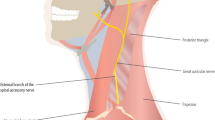Abstract
Background: The diagnosis of Morton’s neuroma is based primarily on clinical findings. Ultrasonography (US) and magnetic resonance image (MRI) studies are considered complementary diagnostic techniques. The aim of this study was to establish the correlation and sensitivity of both techniques used to diagnose Morton’s neuroma.
Materials and Methods: Thirty seven patients (43 intermetatarsal spaces) with Morton’s neuroma operated were retrospectively reviewed. In all cases MRI or ultrasound was performed to complement clinical diagnosis of Morton’s neuroma. In all cases, a histopathological examination confirmed the diagnosis. Estimates of sensitivity were made and correlation (kappa statistics) was assessed for both techniques.
Results: Twenty seven women and 10 men participated with a mean age of 60 years. Double lesions presented in six patients. The second intermetatarsal space was affected in 10 patients and the third in 33 patients. An MRI was performed in 41 cases and a US in 23 cases. In 21 patients, both an MRI and a US were performed. With regard to the 41 MRIs performed, 34 were positive for Morton’s neuroma and 7 were negative. MRI sensitivity was 82.9% [95% confidence interval (CI): 0.679–0.929]. Thirteen out of 23 US performed were positive and 10 US were negative. US sensitivity was 56.5% (95% CI: 0.345–0.768). Relative to the 21 patients on whom both techniques were carried out, the agreement between both techniques was poor (kappa statistics 0.31).
Conclusion: Although ancillary studies may be required to confirm the clinical diagnosis in some cases, they are probably not necessary for the diagnosis of Morton’s neuroma. MRI had a higher sensitivity than US and should be considered the technique of choice in those cases. However, a negative result does not exclude the diagnosis (false negative 17%).
Similar content being viewed by others
References
Civinni F. Su di un gangliare rigonfiamento della piñata del piede. Mem Chir Archiespedale Pistoia. 1835:4–17.
Durlacher L. A treeatise on corns, bunions, the disease of nails, and the generalmanagement of the feet. London: Simpkin, Marshall; 1845. p. 52.
Morton TG. A peculiar and painful affection of the fourth metarsophalangeal articulation. Am J Med Sci 1876;71:37–9.
Levine SE, Myerson MS, Shapiro PP, Shapiro SL. Ultrasonographic diagnosis ofrecurrence after excision of an interdigital neuorma. Foot Ankle Int 1998;19:79–84.
Klenerman L, MacClellan GE, Gulloff RJ, Scadding JW. Mortons’s metatarsalgia: A retrospective and prospective study. In: Proceedings of the British OrthopaedicAssociation. J Bone Joint Surg Br 1983;28:78–82.
Reddy PD, Zellcof SB, Routolo C, Holder J. Interdigital neuroma. Local cutaneouschanges after corticosteroid injection. Clin Orthop 1995;317:185–7.
Wu KK. Morton’s interdigital neuorma: A clinical review of its etiology, treatment and results. J Foot Ankle Surg 1996;35:112–9.
Mann RA, Reynolds JC. Interdigital neuroma-.a critical clinical analysis. Foot Ankle 1993;3:238–43.
Youngswick FD. Intermetatarsal neuroma. Clin Podiatr Med Surg 1994;11:579–92.
Bennett GL, Graham CE, Mauldin DM. Morton’s interdigital neuorma: A comprehensive treatment protocol. Foot Ankle Int 1995;16:760–3.
Coughlin MJ, Pinsonneault T. Operative treatment of interdigital neuroma. A long-term follow-up study. J Bone Joint Surg 2001;83:1321–8.
Lee MJ, Kim S, Huh YM, Song HT, Lee SA, Lee JW, et al. Morton Neuroma: Evaluated with ultrasonography and MR imaging. Korean J Radiol 2007;8:148–55.
Zanetti M, Ledermann T, Zollinger H, Hodler J. Efficacy of MR imaging in patientssuspected of having Morton’s neuroma. AJR Am J Roentgenol 1997;168:529–32.
Zanetti M, Strehle JK, Kundert HP, Zollinger H, Hodler J. Morton neuroma: Effect of MR imaging findings on diagnostic thinking and therapeutic decisions. Radiology 1999;213:583–8.
Sharp RJ, Wade CM, Hennessy MS, Saxby TS. The role of MRI and ultrasound imaging in Morton’s neuroma and the effect of size of lesion on symptoms. J Bone Joint Surg Br 2003;85:999–1005.
Biasca N, Zanetti M, Zollinger H. Outcomes after partial neurectomy of Morton’s neuorma related to preoperative case histories, clinical findings and findings in magnetic resonante imaging scans. Foot Ankle Int 1999;20:568–75.
Bencardino J, Rosenberg ZS, Liu X, Marty-Delfaut E. Morton’s Neuroma: Is always symptomatic? AJR Am J Roentolol 2000;175:649–53.
Guiloff RJ, Scadding JW, Klenerman L. Morton’s metatarsalgia: Clinical, electrophydiolicgical and histological observations. J Bone Joint Surg Br 1984;66:586–91.
Turan I, Lindgren LL, Sahlstedt T. Computed tomography for diagnsosis of Morton’s neuroma. J Foot Surg 1991;30:224–5.
Espinoza N, Schmitt JW, Saupe N, Maquieira GJ, Bode B, Vienne P, et al. Morton neuroma: MR imaging after resectionpostoperative MRI and histologic findins in assymptomatic and symptomatic metatarsal spaces. Radiology 2010;255:850–6.
Resch S, Strenstrom A, Jonsson A, Jonsson K. The diagnostic efficacy of magnetic resonance imaging and ultrasonography in Morton’s neuroma: A radiological-surgicalcorrelation. Foot Ankle Int 1994;15:88–92.
Read JW, Noakes JB, Kerr D, Crichton KJ, Slater HK, Bonar F. Morton’s metatarsalgia: Sonographic findings andcorrelated histopathology. Foot Ankle Int 1999;20:153–61.
Jones S, Bygrave CJ, Betts RP, Smith TW. Morton’s neuroma: A sonographic-surgical evaluation. The Foot 1999;9:189–92.
Shapiro PP, Shapiro SL. Sonographic evaluation of interdigital neuromas. Foot Ankle Int 1995;16:604–6.
Perini L, Del Borrello M, Cipriano R, Cavallo A, Volpe A. Dynamic sonography of the forefoot in Morton’s síndrome: Correlation with magnetic resonante and surgery. Radiol Med 2006;111:897–905.
Kankanala G, Jain AS. The operational characteristics of ultrasonography for the diagnosis of plantar intermetatarsal neuroma. J Foot Ankle Surg 2007;46:213–7.
Weishaupt D, Treiber K, Kundert HP, Zollinger H, Vienne P, Hodler J, et al. Morton neuroma: MR imaging in prone, supine, and upright weight-bearing body positions. Radiology 2003;226:849–56.
Llauger J, Palmer J, Monill JM, Franquet T, Bagué S, Rosón N. MR imaging of benign soft-tissue masses of the foot and ankle. Radiographics 1998;18:1481–98.
Owengs R, Gougoulias N, Guthrie H, Sakellariou A. Morton’s neuroma: Clinical testing and imaging in 76 feet, compared to a control group. Foot Ankle Surg 2011;17:197–200.
Park HJ, Kim SS, Rho MH, Hong HP, Lee SY. Sonographic appearences of Morton’s neuroma. Differences from other interdigital soft tissue masses. Ultrasound Med Biol 2011;37:1204–9.
Author information
Authors and Affiliations
Corresponding author
Rights and permissions
About this article
Cite this article
Torres-Claramunt, R., Ginés, A., Pidemunt, G. et al. MRI and ultrasonography in Morton’s neuroma: Diagnostic accuracy and correlation. IJOO 46, 321–325 (2012). https://doi.org/10.4103/0019-5413.96390
Published:
Issue Date:
DOI: https://doi.org/10.4103/0019-5413.96390




